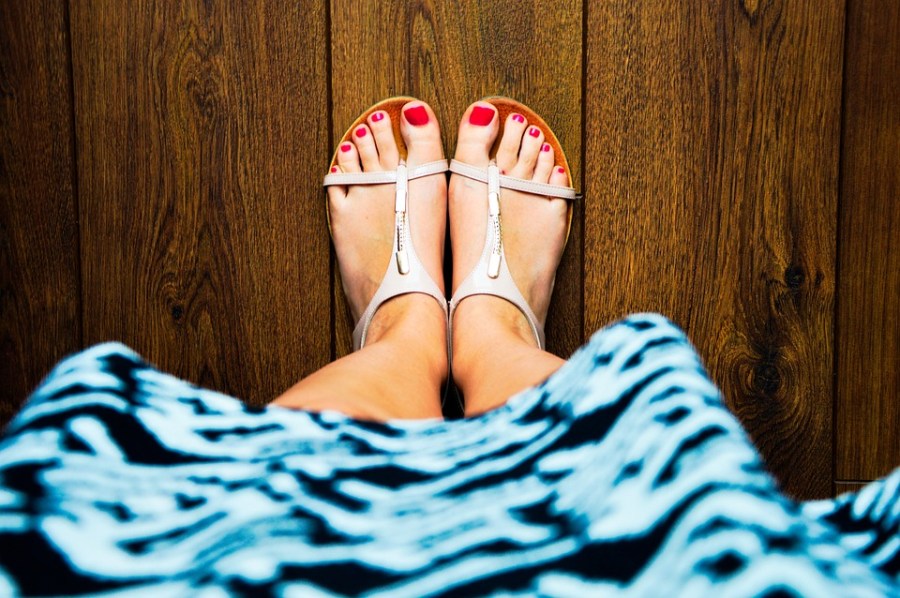
There are dozens of reasons why you might experience foot pain, ranging from simply wearing uncomfortable shoes or a stone bruise to something major like a broken bone or neuropathy. Unfortunately, up to 42 percent of American adults admit to experiencing some type of foot pain on any given day. If your foot pain is persistent, and you don’t know the cause, it’s important to have it checked out by your doctor. While it could be an indication of a serious condition or illness, more often than not, it’s something common like one of the six conditions listed below:
1. Tarsal Tunnel Syndrome
If you’ve ever had a pinched nerve in your back or shoulder, you know just how painful it can be. Tarsal tunnel syndrome is essentially having a pinched nerve in your foot, and it can be pretty painful itself. The pain usually starts around the big toe and can radiate up towards the ankle and all the way into the calf in severe cases. It may cause burning, tingling and numbness as well. For most cases, rest and avoiding activity that aggravates the condition will make it go away. Your doctor may prescribe anti-inflammatory drugs or steroids injections as well. Unless it’s severe, you may even find that you don’t need to see a doctor.
2. Arthritis
As you age, the cartilage in your joints wears down, and you develop a condition called arthritis. Most people think of it being a condition of the back, knee, shoulder or elbow, but it can impact any joint in your body, including your toes and ankles. You may experience stiffness in the foot with arthritis or hear a grinding sound when you move or exercise. Many people find that inserts in their shoes, pads, braces, orthotics and arch supports can help alleviate many arthritis symptoms, especially when they are paired with a pain reliever or steroid injections. In some more severe cases, you may need a cane, walker, brace or special shoes.
3. Plantar Fasciitis
Heel pain is one of the most common types of foot pains that people experience, and while there may be several causes, the most common is usually plantar fasciitis. Inside your foot is a long piece of tissue called the plantar fascia which is sort of like a shock absorber for your body. The part that connects to your heel can become inflamed easily which leads to heel pain, especially early in the morning when you take your first steps of the day. Resting your foot, wearing arch supports and cushions in your shoes, taking over-the-counter pain relievers and stretching your foot may help. In most cases, the pain subsides a bit as the day goes on.
4. Ingrown Toenail
If the pain is in your toe, it could be an ingrown toenail. Contrary to popular belief, you can’t usually see an ingrown toenail because it’s happening under your skin. But you can definitely feel it, and, if it becomes infected, you’ll notice redness and swelling around the side of the toenail. Try soaking your foot a few times each day and afterwards, gently pulling the skin back away from the nail and tucking a piece of gauze under it. If this doesn’t help or you do notice an infection, you’ll probably want to see your doctor as soon as possible. You may need antibiotics, and in severe cases, the toenail may need to be removed.
5. Bunions
If you notice a little bump on the side of your foot, usually beneath the big toe, though it can be beneath your little toe on the outside of the foot, you may have bunions. These occur over time as your toes shift out of their original position. Pain may be constant, flare up occasionally or rarely occur at all. They’re more common in women than men, and they can be worse if you wear high heels. Shoe inserts, like bunion pads and toe spacers, can help ease the pain. Topical pain relief creams, switching to comfortable shoes, wearing a bigger size shoe, ice packs, soaking your feet and elevating your feet may also help. In some severe cases, you may require surgery.
6. Corns and Calluses
Calluses and corns are both caused by friction. While the two are often confused with each other, corns typically occur on the foot where your shoes rub against your skin, and calluses may show up anywhere that sees constant friction, especially when you walk, jog or exercise. Both lead to the hardening of the skin and can be painful. Calluses on the bottom of the heel may even split open. Most of the time, you can treat both with over-the-counter products and home remedies, but if your corn or callus ever bleeds or discharges a clear fluid, it’s time to see a doctor. If you have heart disease, diabetes or poor circulation, you may also want to see your doctor anyway to make sure you don’t get an infection.





